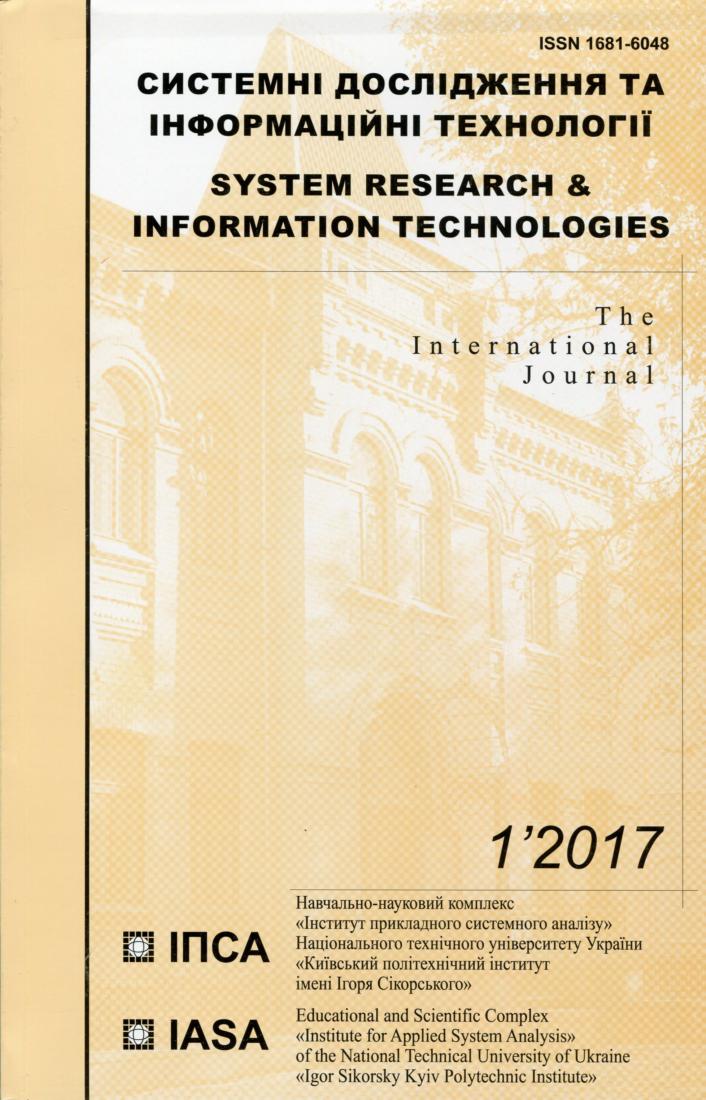Genotype dynamic for agent neuroevolution in artificial life model
DOI:
https://doi.org/10.20535/SRIT.2308-8893.2017.4.06Keywords:
artificial life, multiagent systems, neuroevolutionAbstract
Cooperation behavior is one of the most used and spread Multi-agent system feature. In some cases emergence of this behaviour can be characterized by division of population on co-evolving subpopulations [1], [2]. Group interaction can take not only antagonistic conflict form but also genetic drift that results with strategies competition and assimilation [3]. In this work we demonstrate different relation between agent grouping and they behavior strategies. We use approach proposed in work [2] methodology of agent genotype dynamic tracking, due to this approach the evolving population can be presented in genotype space as a cloud of points where each point corresponds to one individual. In current work consider the movement of population centroid – the center of the genotype cloud. Analysis of such trajectories can shad the light on the regimes of population existence and genesis.References
Kenneth Stanley O. Competitive coevolution through evolutionary complexification / Kenneth O. Stanley, Risto Miikkulainen // Journal of Artificial Intelligence Research. — 2004.
Burtsev М.S. Research into new types of self-organization and behavioral strategies: phd dis. / М.S. Burtsev // IAM M.V. Keldysh RAS. M. — 2005. — 120 p.
Epstein Joshua M. Growing artificial societies: social science from the bottom up / Joshua M. Epstein, R. Axtell. — Brookings Institution Press, 1996. — 307 p.
Adamatskii A. Artificial Life Models in Software / A. Adamatskii, M. Komosinski // Springer-Verlag.
Adami C. Introduction to Artificial Life / C. Adami // Springer. — Berlin, 2005.
Aguilar W. The Past, Present, and Future of Artificial Life, Frontiers in Robotics and AI V. 1. / W. Aguilar, B.G. Santamaria, T. Froese, C. Gershenson. — 2014. — Doi: 10.3389/frobt.2014.00008.
Bedau M.A. Open problems in artificial life. Artif. Life 6 / M.A. Bedau, J.S. McCaskill, N.H. Packard, S. Rasmussen, C. Adami, G. Green. — 2000. — P. 363–376. — Doi:10.1162/106454600300103683, doi:10.3389/frobt.2014. 00008.
Langton C.G. Artificial Life: An Overview / C.G. Langton. — Cambridge, MA: MIT Press, 1997.
Penn A. Artificial Life and Society: Philosophies and Tools for Experiencing, Interacting and Managing Real World Complex Adaptive Systems. Proc. Int. Conf. Acai / A. Penn. — Mexico: Cancun, 2016. — P. 26–27.
Taylor T. A Review of the First 21 Year of Artificial Life on the Web / T. Taylor, J.E. Auerbach, J. Bongard // Artificial Life (USA). — Vol. 22, N 3. —Massacussets: MIT, 2016. — P. 364–407.
Wikipedia. Artificial Life. — Avaliable at: https://en.wikipedia.org/ wiki/ Artificial_life
Dorin A. Biological Bits. A Brief Guide to the Ideas and Artefacts of Computational Artificial Life / A. Dorin. — Melbourne: Animaland, 2014.
Gras R. Speciation without Pre-Defined Fitness Functions. PLoS ONE 10(9): e0137838 / R. Gras, A. Golestani, A.P. Hendry, M.E. Cristescu. 2015. — Doi: 10.1371/journal. pone.0137838
Krivenko S. Simulation of the evolution of aging: effects of aggression and kin-recognition. In Advances in Artificial Life / S. Krivenko, M. Burtsev // 9th European Conference, ECAL, Lecture Notes in Computer Science, 2007. — P. 84–92.
Lindgren K. Cooperation and Community structure in artificial ecosystems / K. Lindgren, N.G. Nordahl // Artificial Life, 1994. — P. 15–37.
D’Ambrosio D.B. Generative encoding for multiagent learning / D.B. D’Ambrosio, K.O. Stanley // In Proceedings of the Genetic and Evolutionary Computation Conference. — New York: ACM Press, 2008. — Doi: 10.1145/1389095. 1389256.
Yaeger L. Computational Genetics, Physiology, Learning, Vision, and Behavior or PolyWord: Life in a New Context. In Langton, C. G. (ed.) / L. Yaeger // Artificial Life III. Addison-Wesley, 1994. — P. 263–298.
Packard N. Intrinsic adaptation in a simple model for evolution / N. Packard, C.G. Langton // Artificial life, Redwood City, Addison-Wesley, CA, 1989. — P. 141–155.
Forrest S. Modeling complex adaptive systems with Echo. Complex Systems: Mechanisms of Adaptation / S. Forrest, T. Jones. — Amsterdam: IOS Press, 1994. — P. 3–21.
Hraber P.T. Community Assembly in a Model Ecosystem. / P.T. Hraber, B.T. Milne // Ecological Modeling. — 1997. —P. 267–285.
Burtsev M. Evolution of Cooperative Strategies From First Principles / M. Burtsev, P. Turchin // Nature. 2006. — P. 1041–1044.
Zavertanyy V. Aggressive and peaceful behavior in multiagent systems on cellular space / V. Zavertanyy, A. Makarenko // Cистемні дослідження та інформаційні технології. — № 2. — 2016. — P. 36–44.

